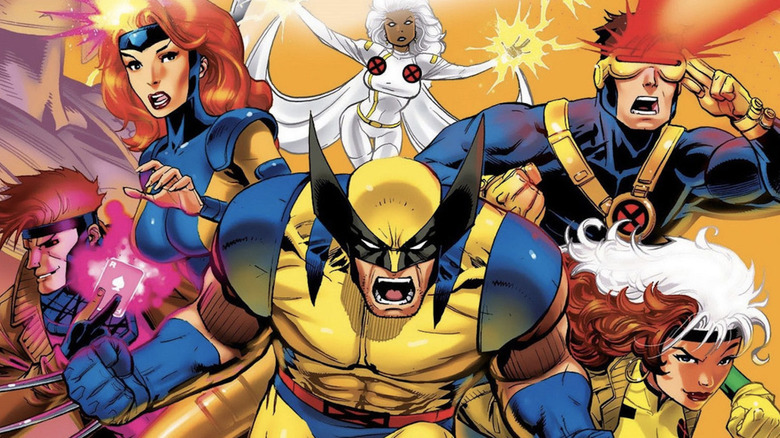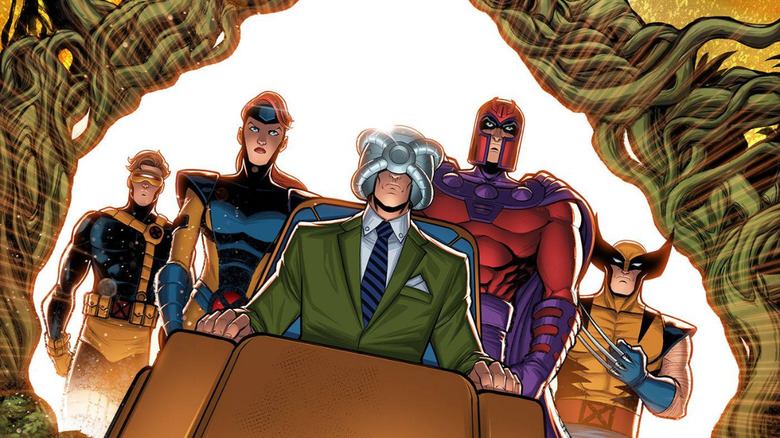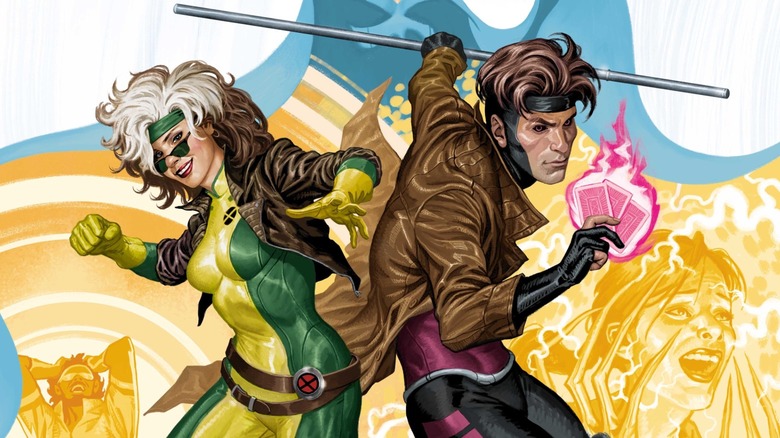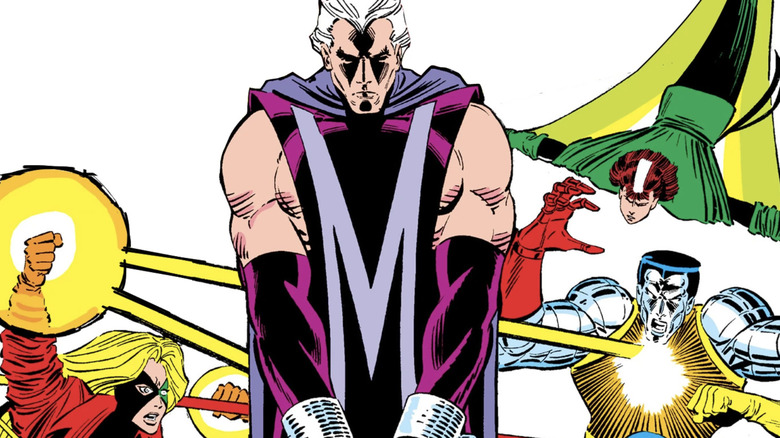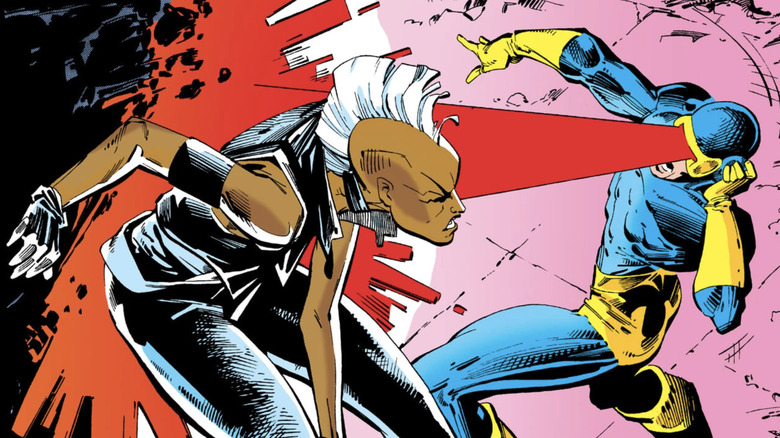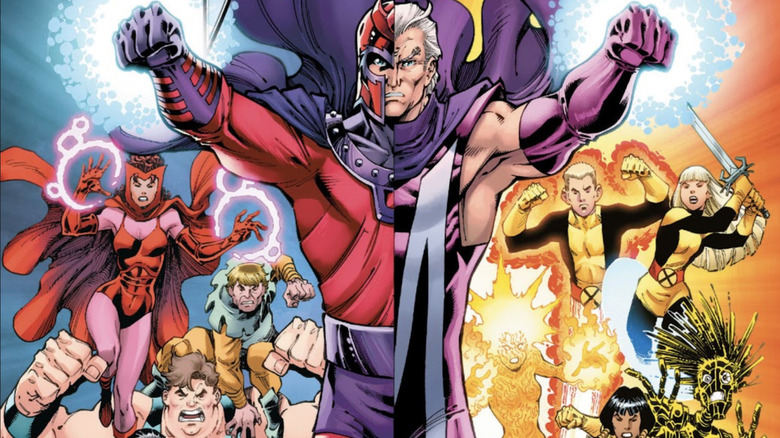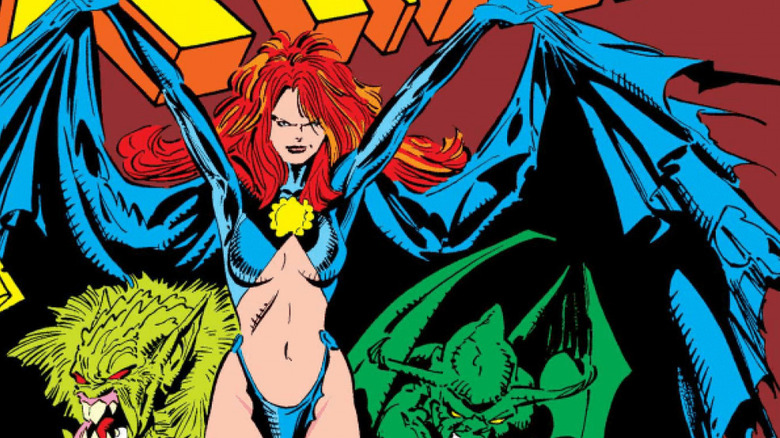6 Comics Marvel Fans Should Read Before X-Men '97, Ranked By Importance
The trailer for "X-Men '97," the revival of the cartoon series beloved by '90s kids everywhere, recently premiered. That means it's that time again — that time when nerds like me try to get you superhero movie/TV fans to read some dang comics.
"X-Men" itself was enthusiastic about adapting comic stories, particularly ones written by Chris Claremont during his legendary 17-year-long run on "X-Men" (from 1975 to 1991, issues #94 to #279). Season 1 of "X-Men" closed out with the two-part time-travel comic "Days of Future Past" and then, in season 3, the show adapted both the original "Phoenix Saga" and "The Dark Phoenix Saga."
Larry Houston, the original producer/director of "X-Men," is a big fan of the comics and made the show with attention to the details of the source material. Houston is back as a consulting producer on "X-Men '97" and head writer Beau DeMayo recruited "X-Men" fans as his team, feeling that enthusiasm about the material was needed for the show to work. The trailer certainly has plenty of Easter eggs from the X-Men comics.
So, why not dive into the comics that inspired these cartoon writers? Yes, yes, the "X-Men" comics have been running for 60 years now, and choosing from that many options can be overwhelming. On the other hand, all that variety means that there's something for everyone. If you're excited about "X-Men '97," here are the comics you should check out.
6. X-Men '92: House of XCII
The current line of "X-Men" comics was launched in 2019 by writer Jonathan Hickman and artist Pepe Larraz with the intersecting mini-series: "House of X" & "Powers of X." In these, Professor X and Magneto finally put aside their differences — because Charles has seen Erik's light.
It turns out Moira MacTaggert, Charles' on-and-off lover, is a mutant herself; when she dies, the whole timeline resets to the moment of her birth, but she remembers everything. She's lived ten lives and wants to use her knowledge so mutants survive. So, she brings together Xavier and Magneto and they create a new mutant homeland on the island of Krakoa (Moira is a silent partner).
The "Krakoa era" of "X-Men" is coming to an end this year, with full circle mini-series: "Fall of the House of X" (Gerry Duggan & Lucas Werneck) and "Rise of the Powers of X" (Kieron Gillen and RB Silva). There are dozens of comics in between, so if you're an "X-Men" '92 fan and want to know if Krakoa is to your liking — read "X-Men '92: House of XCII" (by Steve Foxe and Salva Espin).
The five-issue series imagines the events of Krakoa unfolding in the world of the 1990s "X-Men" cartoon. Espin reuses the costume designs from the show, with thicker line art, earthier colors, and a softer sheen than Larraz's art. Foxe blitzes through the major beats of Krakoa (for instance, issue #3 speed runs through the 20+ issue "X of Swords" event).
Basically, "X-Men '92: House of XCII" takes your childhood X-Men heroes and puts them through new challenges. If those challenges/stories intrigue you, then check out the Krakoa-era comics themselves.
5. Rogue & Gambit/Mr. and Mrs. X
Part of the "X-Men" ensemble were two southern lovebirds: Rogue, who can't control her deadly powers to steal vitality with a touch, and Remy LeBeau/Gambit, a reformed thief/card sharp with kinetic energy at his fingertips. Gambit flirted plenty with Rogue but despite her interest, she usually pushed him away for fear of hurting him. In an interview with Empire, DeMayo said that the relationship will continue to be core in "X-Men '97" — "[Rogue and Gambit are] our one true pairing."
For some romantic adventures with them, check out semi-recent comics where Rogue, having gotten her powers under control, finally tied the knot with Remy.
2018's five-issue "Rogue & Gambit" (by Kelly Thompson and Pere Perez) follows the two on a couple's vacation that turns into a work trip. Thompson followed that with the 12-issue series "Mr. and Mrs. X" (art by Oscar Bazaldua and Javier Pina); after Rogue and Remy get married in "X-Men: Gold" #30, their attempts at a honeymoon are foiled by both interstellar war and Gambit's old Thieves Guild.
The 2023 "Rogue & Gambit" (this one written by Stephanie Phillips, art by Carlos Gomez) follows them squaring off with the villainous Power Broker, who is trafficking B-list supervillains for sale to even worse villains. Meanwhile, they try to balance their relationship with their different careers (Rogue is an active X-Man, Gambit is not) and their communication issue (Rogue admits they get along better when they're f***ing than when they're talking). Plus, Gambit has to deal with his disapproving mothers-in-law: Mystique and Destiny.
All three "Rogue & Gambit" series are sexy, funny, and light reads that mix romance and action.
4. The Trial of Magneto (Uncanny X-Men #200)
Chris Claremont was the writer who gave Magneto his humanity (and Holocaust survivor backstory). It all started in "Uncanny X-Men" #150 (art by Dave Cockrum), where Magneto finally sees how far he's fallen after he almost kills teenage Kitty Pryde. Like him, Kitty is a mutant and a Jew, and yet he's struck her like the monsters of his childhood whom he swore to destroy.
This culminates 50 issues later in Issue #200, "The Trial of Magneto." Magneto (having surrendered himself) is tried by the International Criminal Court, having decided to secure mutants' safety by taking on all of humanity's hatred upon his back. However, the Neo-Nazi mutant Fenris twins crash the party, and the trial is disrupted. Xavier, who has fallen ill and must leave Earth, instead decides the verdict: for Magneto's recompense, he must carry on Xavier's dream (or rather, "Our dream," as Charles says to remind his friend of how they once worked together).
"The Trial of Magneto" has some of Claremont's most powerful writing on this side of "God Loves, Man Kills" — from Magneto's public testament on the comforting lie of "Never Again" to his parting words with Charles. With smooth line art and page-popping action from John Romita Jr., this comic will thrill your brain and heart.
"Graduation Day," the series finale of "X-Men," adapted the story beats of an infirm Xavier leaving Earth and his reconciliation with the friend he calls Magnus. That leaves "X-Men '97" with the same status quo the comics were in after "The Trial of Magneto." With Professor X out of the picture, Magneto will be leading his old friend's students in "X-Men '97" — the final moment of the trailer is him showing the X-Men Charles' will naming Magnus as his heir.
3. Duel (Uncanny X-Men #201)
Picking up after "The Trial of Magneto," the X-Men must decide who will lead them with Xavier gone. It comes down to Storm and Cyclops, who settle it with a duel in the holographic battlefield of the Danger Room. Storm wins.
Penciler Rick Leonardi isn't quite on the same level as some of Claremont's other artist partners like Romita or Dave Cockrum. Still, Leonardi's cover is perfectly composed, with Cyclops' eye beam always drawing you back to Storm even when your eyes wander to her opponent. Plus, while the blocking puts them almost head to head, Storm is the one with the high ground.
Storm's victory is doubly impressive because she lost her weather-controlling powers about 15 issues prior. The contest is decided physically because Storm wants to show Cyclops how wrong he is that she can't defend herself or her team without those gifts.
Cyclops, currently married to Madelyne Pryor, has just had his first son born. And yet, he'd rather lead the X-Men than spend time being a father. Scott Summers is a lot like Bruce Wayne: a master tactician and a social disaster who neglects his family because he's much more comfortable devising strategy than opening up. While he concedes to Storm, he takes the outcome as a sobering defeat, not a wake-up call about his new family.
Now, the "X-Men '97" trailer doesn't have any hint of this duel and Cyclops seems comfortable leading the X-Men. However, Jean Grey is pregnant with her and Scott's child, which seems like an easy way to explore Cyclops' conflicted feelings of responsibilities. Plus, seeing this X-Men vs. X-Men duel rendered by Studio Mir sounds like a win to me.
2. Magneto (2023)
Magneto inheriting the School for Gifted Youngsters looks to be inspired by the original "New Mutants" run, specifically after issue #35. After Xavier went on off-world medical leave in "Trial of Magneto," Magneto took over teaching that new generation of young mutant heroes. He wound up leading the New Mutants for longer than Xavier himself did.
The only difference is that in "X-Men '97," Magneto will be teaching the X-Men themselves rather than the New Mutants. Magneto's costume in the show is the one he wore in "New Mutants," going back to "The Trial of Magneto."
If you want to know if "New Mutants" is to your liking, read the 4-issue "Magneto" series published last year. The comic, set during "New Mutants" (around issue #38), was drawn by Todd Nauck and written by the legendary J.M. DeMatteis — a contemporary of Claremont's who can approach his work without the reverence of someone who read it young.
DeMatteis is a student of Russian writer Fyodor Dostoevsky. He quotes him (or at least English approximations) twice in "Magneto" with the titular antihero's mouth: "Nothing is easier than to denounce the evildoer; nothing is more difficult than to understand him" and, "Good and evil are monstrously mixed up in men."
Those ideas are the heart of "Magneto," which attempts to reconcile the character's earlier supervillain appearances with the man Claremont turns him into, and how those contradictions still divide Magneto's mind. DeMatteis, who previously drew on Dostoevsky to write "Spider-Man: Kraven's Last Hunt," has no peer in exploring the conflicted hearts of comic book villains. I'll be pleasantly surprised if "X-Men '97" can characterize Magneto with this same complexity.
1. Inferno
The X-Men fighting the hordes of Hell? It could happen, and did in the 1988-1989 crossover event "Inferno." You see, after Jean Grey returned to life, Scott dumped Madelyne, who is out to prove the saying "Hell hath no fury like a woman scorned," literally. She accepts the offer of demons to become their Goblin Queen and sets out to merge Earth with the realm of Limbo, even if it means sacrificing her son. As for her outfit? Chris Claremont never met a character he couldn't dress like a dominatrix.
The main thrust of "Inferno" unfolds across "Uncanny X-Men" #239-243 by Claremont and "X-Factor" #36-40 by Louise Simonson (the story is organized on the Marvel Unlimited digital reading service). It would have been easy to just draw the demons as hordes of identical monsters, but artists Marc Silvestri and Walt Simonson (husband of Louise) give each one a unique face, size, and shade of green scales. They tend to share the same evil yellow eyes, toothy maws, and slim Xenomorph-style heads though. Worse, as the realms merge, the texture of buildings in New York City changes from stone to demonic scales.
"Inferno" is the comic that revealed Madelyne Pryor to be a clone of Jean created by Mister Sinister, who ultimately usurps her as the story's villain. From casting news to leaked toys to the pregnant "Jean" in the trailer, it seems like "X-Men '97" might do its version of "Inferno" (Jean survived the original show's version of "Dark Phoenix Saga," so the series never adapted the arc or even included Madelyne Pryor).
Silvestri and Simoson's luscious yet creepy drawings need no updating, but seeing New York City be consumed by Hell in motion? That could be a visual treat.
"X-Men '97" premieres on Disney+ on March 20, 2024.
